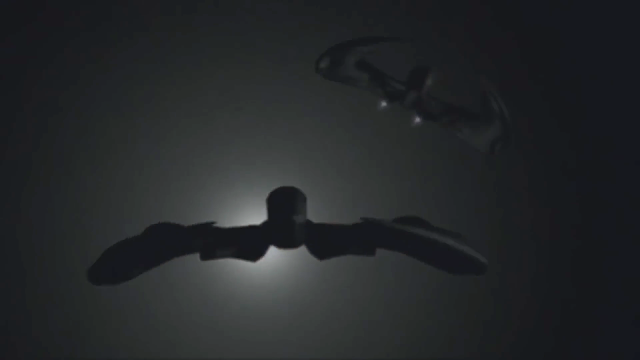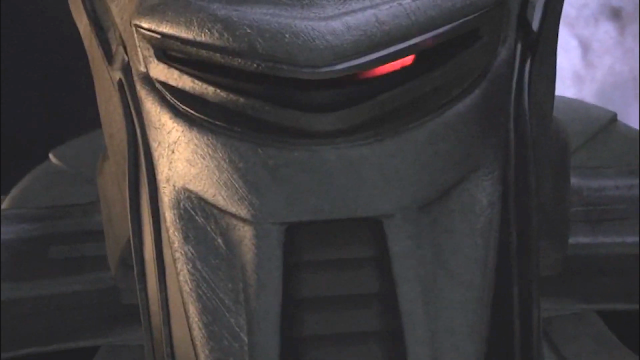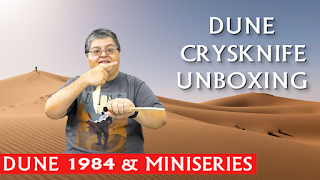Today, we are looking at the Cylon Raider from Ronal D. Moore's 2003 reimagined series.
I have gone with the Eaglemoss Hero Collection when collecting ships from the Battlestar Galactica franchise. Also, I purchase them on Amazon because I know I am guaranteed a refund or a replacement if the item arrives damaged or is not up to snuff in any way.
Almost all of the Amazon reviews of this model are positive, so I feel safe spending my hard-earned money on it.
For starters, the box is quite nice.
Inside, as usual, is the styrofoam packaging with the product cutouts, keeping the model secure.
The actual dimensions of the Cylonh Raider turned out to be:
The Cylon Raider has some heft to it. So, I weighed it.It turns out to weigh 11.45 ounces. In metric, that coverts to 0.32 Kg or just 32 grams.
Comparison to Viper
Context
I spent my paper route money buying a Super 8 camera with my best friend. We enrolled in the school's drama class so we could learn the art of acting. I read books on cinematography. I bought every Starlog magazine to get an inside track on creating special visual effects for my film.
I bought model kits of X-Wings and Tie Fighters. Not only to hang them on my ceiling but also to explode them in front of said Super 8 camera. My room's ceiling was a menagerie of World War 1 and 2 model aircraft on one side of the room, and on the other side was my USS Enterprise, Pan Am starliner, and all my Sci-Fi models. It was wild.I got books on scriptwriting and spent time at the library trying to understand sound design in films.
I was obsessed.
I still went to school, had a paper route, and was a voracious reader, but all that ended when I was shuttled off to the desert in the hot summer of 1978.
It took me time to acclimate to the harsh desert environment.
I got a job at a radio station, but that didn't stop my love of sci-fi, action stories, horror movies, and just being a kid.
I was still engrossed in Star Wars; however, on the horizon was a new world to immerse me in the galaxy of a rag-tag fleet fleeing from their inhuman enemies—Battlestar Galactica.
The "pilot" premiered in theaters on May 18th, 1978, as a 2-hour, 22-minute extravaganza that promised to bring religious ideals along with ancient alien concepts and tell the story that was supposed to be about how life here began out there.
Although I wasn't earnestly pursuing my film-making quest, I was still moving in that direction. I continued my work in 16 mm and, of course, started building Vipers and Cylon Raiders.
Yes, I had several Vipers and Cylon Raiders hanging in my bedroom.
After high school, I returned to my city by the ocean, escaping the desert hellscape. I did this on my own, leaving my family behind. A year or so later, when my family also decided to return, I found that many of my childhood models had to either remain in storage or be tossed due to a lack of space.
Besides, I had other endeavors.
What do millennials today call adulting?
After raising a family and building a career, while I no longer have the time to make these model kits, I have the resources to search out and find replicas that bring home those fond memories. But which fond memories?
By this time, a new Battlestar Galactica had returned to television. I am talking about Ronald D. Moore's reimaging. Not only did he rework the mythology to fit a modern-day audience, but they jettisoned the original network's mandate that the show had to be kid-friendly, thus quickly removing the Boxey character.
There is no ambush by Lizard creatures, with their robotic minions carrying out genocide during a peace meeting; there is an ambush. It is during an armistice. The Cylons are updated to look less like Roman soldiers and more like slender chrome killing machines with the iconic red eye that scams back and forth. And, oh yeah, the Cylons are now human-looking, and the first one we meet is gorgeous.
Moments later, when the pilots come in range of the Cylon Raiders in this first encounter, the Viper pilots see what their enemies look like now, but they only live briefly.
Boomer and Helo fall back out of range and see the carnage as the raiders jam the Viper squad's electronics, dooming them to slaughter. The two race back to the Galactica, hoping to make a report.
Unfortunately, that report will have to wait as Boomer and Helo are pursued and wounded by two chasing Cylon Raiders, forcing them to put down on Caprica to make repairs. This is where they lose Helo and pick up survivors, including Dr. Gaius Baltar.
Before their deaths, the Viper squad saw flying machines that didn't seem to have a pilot. Looking at where a cockpit should be, the scanning red eye gave us all the impression that these were artificial intelligence running amok.
Well, that is at least until we get to the fifth episode of the first season: "You Can't Go Home Again."
This is where the big reveal comes into play.
Of course, the Cylons in the reimagined version are presented as two types: the Cylons that physically resemble humans and the Cylons that seem to be just an upgrade on the War-era Cylons, which are purely mechanical AI with Romanesque helmet-looking heads.
As she recovers from her parachute landing and damaging her knee. Hobbling along, she comes across the downed Cylon raider.
Approaching the Raider, she notices the hole in the side of the cockpit, or "head." She realizes the Raider, or the Cylon inside, is no longer operational. She opens a hatch only to find organs and mechanical tubing.
Like the humanoid Cylons, the Cylon Raider is a biomechanical entity.
This actually changes the dynamics of consciousness in the Battlestar Galactica Universe.
"brains" and operate the roll, pitch, and yaw herself. As there is a biological aspect to the Raider, there must be some way to keep the biology alive, like a circulatory system.
Tapping into the oxygen system, Starbuck takes off and returns to the Galactica.
In the first episode of the fourth and final season, the Cylons appear out of nowhere, and Adama orders a red alert, sending all the pilots to their ships.
During the battle, Sam, new to the piloting thing, is caught dead to rights when a raider flips around and targets Ander's Viper.
The Raider scans Anders and recognizes that he is one of them. He communicates with the other raiders and breaks off the attack.
The purely mechanical centurions, which are clearly obedient robots, can think independently, except that the human models have installed telencephalic inhibitors into the centurions.
Once again, Battlestar Galactica transcends its 1978 predecessor by asking whether it is morally correct to lobotomize the raiders.
The Centurions discovered what Cavill was doing to the raiders because they failed to continue attacking the human fleet.
I always had an issue with the original Cylon Raiders.
When I was 13, I went along with the three Cylons required to fly the Raider. Technologically, why would it need three centurions?
Take that a step further: Why do we need a centurion at all? They are machines, robots. How soon before we no longer need human pilots to fly drones into war?
Tell me in the comments if you agree or not.















.jpg)


















































_First_edition.jpg)
